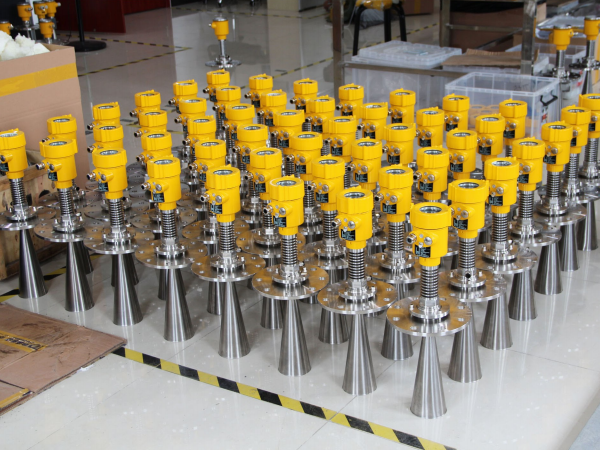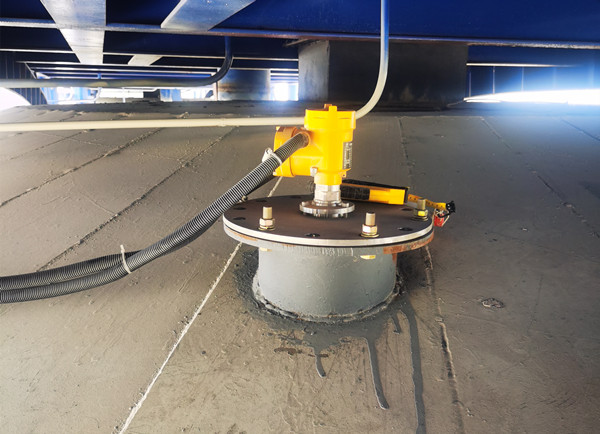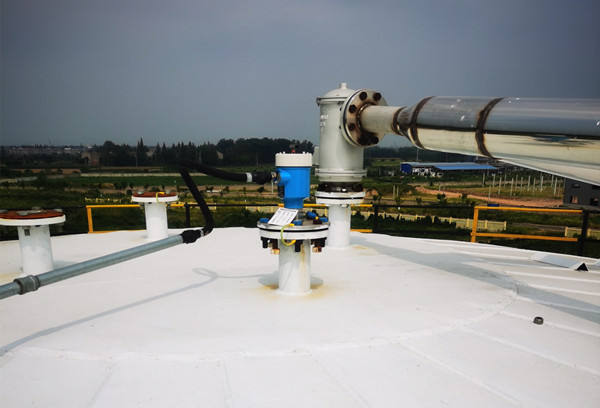The radar level meter has the advantages of non-contact, low protection, no hanging material, anti-adhesive, high performance, high reliability, and long service life. Even in extreme temperatures, extreme pressure, strong corrosive media, volatile media, vortex agitation, scaling and dust, and other conditions can be measured reliably.
A radar level meter can measure the level of high temperature, high-pressure medium; toxic, harmful, volatile, and unstable medium level; high viscosity medium in the tank (such as asphalt, crude oil, etc.) level; the level of dynamic tank medium with sharp fluctuations in the surface, etc.
However, the radar level meter will encounter the problem of inaccurate accuracy when measuring the level of the above-mentioned media. It is necessary to understand the factors that affect the accuracy and teach you a few tricks to solve the problem by the way.

1. The level fluctuation or foam scattering of the measured medium can cause the signal to weaken, so the power of the signal source needs to be increased or the waveguide needs to be added.
2. The amount of reflected wave energy received by the radar level meter depends on the reflective properties of the measured medium, and the reflectivity depends on the conductivity and dielectric constant of the measured medium. Low dielectric constant, low conductivity of the liquid reflection signal is weak, signal attenuation is serious. Therefore, when measuring the level of the radar level meter, the power of the emitted electromagnetic wave signal source must be considered.
3. When there is an obstacle in the tank of the measured medium, a false signal is generated, which affects the normal operation of the radar level meter. For this reason, powerful microprocessors are used for complex signal processing. At the same time, the installation avoids obstructions in the tank as much as possible.

4. The installation of the radar level meter should make the antenna emit electromagnetic waves as perpendicular to the liquid surface of the measured medium as possible, while the antenna should receive as many reflected waves from the liquid surface as possible.
5. The radar level meter should use different shapes of antennas under different working conditions. In order to avoid interference from the tank wall and interfering objects inside the tank, it is recommended to use a waveguide tube to avoid interference echoes.

6. When the radar level meter measures the top of the tank, the liquid level should be kept at a certain distance from the antenna to prevent the measured medium from corroding the antenna.
At the same time, when measuring the liquid level at the bottom of the tank, the transmitting wave may penetrate the liquid level and hit the bottom of the tank, so the reflected wave is an interference wave.
Or when the bottom of the tank is concave or conical, the radar level meter cannot measure when the liquid level is below this point. Therefore, attention should be paid to the choice of limit values in signal processing problems.
These are effective ways to solve the measurement problems of radar level meters, I hope they can help you to solve the problem in the actual measurement, but the methods mentioned in this article are for reference only, the specific need to operate according to their own actual situation.
